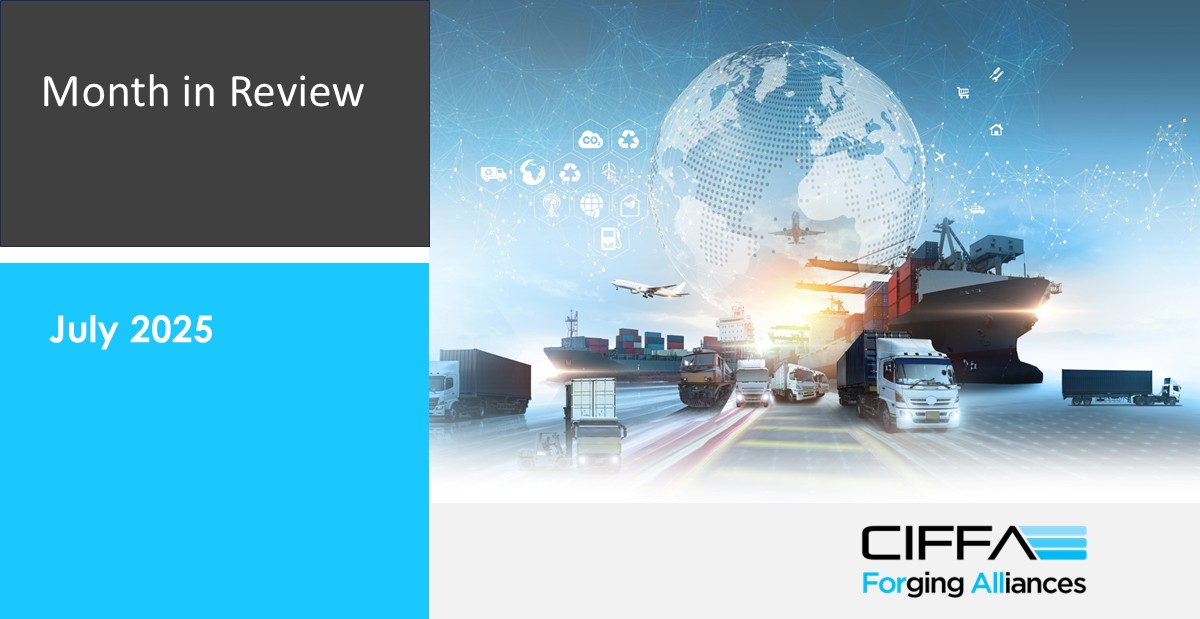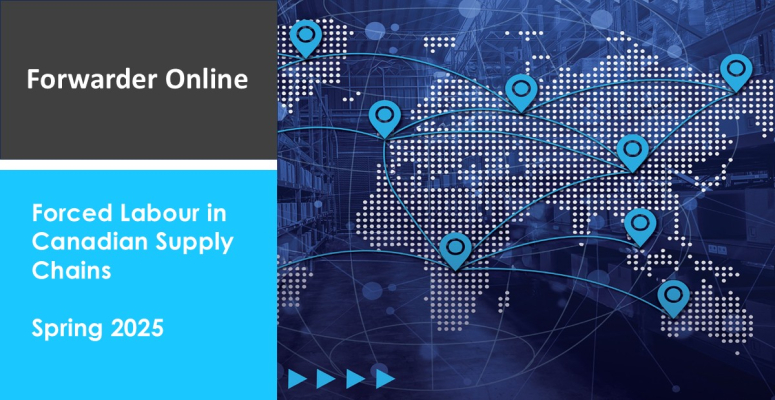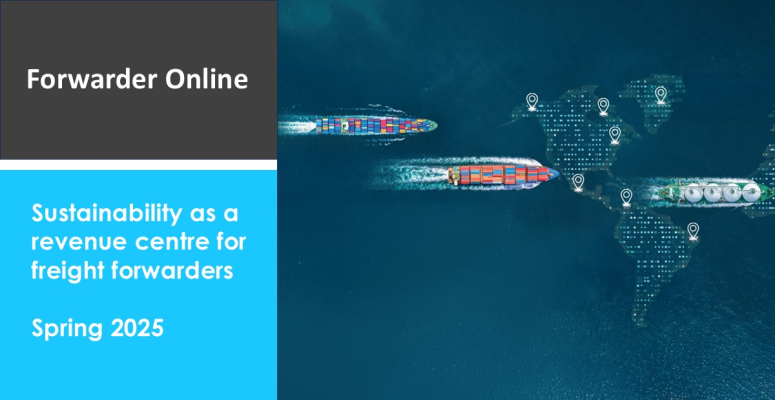
Getting to grips with emissions
By Ian Putzger
Sustainability goals have been receding into the future. In recent months many large companies, from airlines to retailers and banks, have rowed back from their emissions reduction targets for 2030, although they maintained their pledges for carbon-neutral operations by 2050. It seems that for the logistics sector, even 2050 may be an elusive target. According to the European Environment Agency, logistics will account for up to 40 percent of global CO2 emissions by that year unless changes are implemented.
The new administration in Washington was quick to dismantle sustainability funding programs of its predecessor, but Ottawa remains committed to its net zero goal for 2050.
The first set of courses was oversubscribed, indicating strong interest in the issue from across the spectrum of industry. Moreover, pursuing emissions reduction is good business sense, she remarked.
Without a doubt there is a need for signposts in a landscape of standards and frameworks that is dense and cluttered, leaving many confused where to begin. There have been over 600 different standards and guidelines since the first standard appeared in 1997. Logistics firms brandish a broad array of badges and certificates on their emissions reduction credentials. As recent developments have shown, commitments to emissions targets carry little weight, as they may get pulled back or quietly abandoned for a variety of reasons.
Environmental interest groups that engage with industry about emissions find little merit in green programs if there is no improvement in a company’s carbon footprint. “Ultimately it comes down to numbers, not certifications,” says Jonathan Butler, corporate campaign manager at San Francisco-based Pacific Environment.
Emissions calculators are becoming readily available. Last year CIFFA installed the Freight Emissions Calculator from Pledge on its website to give members an opportunity to trial its technology to measure and reduce emissions free of charge. The calculator’s measurement engine is accredited by the Smart Freight Centre for conformance with the Global Logistics Emissions Council (GLEC) framework and covers all modes of freight transport. Other organisations that have partnered with Pledge include DP World and the World Cargo Alliance.
GLEC provides a set of guidelines for the methodology for calculating and reporting greenhouse gas (GHG) emissions. It covers all modes for calculations from basic to more granular levels and is regularly updated to capture evolving regulations and requirements.
“There has been a lot of discussion if the data is good enough. It is good enough,” says Kathrin Brost, global head GoGreen at DHL Global Forwarding.
Essentially there are two approaches to reducing GHG emissions – aiming to burn less CO2 through supply chain optimisation, and burning clean through use of compliant technology and/or low emission fuel options, she says.
According to technology solutions provider Epicor, supply chain optimisation will get a boost from the deployment of AI, which can pinpoint emissions hotspots, automate tailored reports, visualisations and dashboards to help with compliance. Eventually, however, companies will reach a level of maximum optimisation of their supply chain and processes, remarks Brost.
While carriers have taken steps to reduce emissions in their warehouses and yards, these gains are negligible compared to the operation of their vehicles. At the extreme end, 99 percent of an airfreight carrier’s carbon footprint is flying. Hence, meaningful progress in GHG reduction can only be made in carriers’ fleets – by bringing in green technology or burning green fuels.
The high upfront cost of most sustainable technologies, combined with their usually slower return on investment, means that their adoption is headed by larger operators, at least in the initial stage. Electric propulsion has made some headway on the roads, but it is only in the initial stage in ocean transport (Chinese carrier COSCO introduced two battery-powered box ships with a capacity of 700 teu in late 2023) and at the conceptual stage in air cargo. While there are some projects for the introduction of small electric cargo planes, battery-powered large widebody freighters are widely seen to be decades away – if at all feasible, as the weight of a suitable battery would seriously impact payload capabilities.
Hence, much of the improvement in technology to reduce emissions in international longhaul traffic has come from the deployment of more modern jets and ships with better fuel efficiency and the use of alternative fuels, although the latter remain at a low percentage of overall fuel burn. The limited availability of eco-fuels has revived the fortunes of liquid natural gas (LNG), but this is still a fossil fuel and therefore seen as a transition solution until green fuels can be scaled up to necessary levels.
On the roads the advance of electric trucks has been hamstrung by their higher acquisition cost and limited range compared to diesel-powered models. Arguably an even bigger obstacle is the lack of a comprehensive charging infrastructure. While local operators like parcel delivery companies can charge their vehicles overnight at their depots, this option does not exist for longhaul trucking. Moreover, charging infrastructure is expensive. Brost points out that a charger costs around 120,000 euros (C$187,740).
“You will not invest in an e-truck if you can’t charge it,” she remarks.
On the airline side the chief focus in terms of sustainability programs offered to cargo customers has been on sustainable aviation fuel (SAF). Carriers like Lufthansa, Air France KLM and Air Canada offer buy-in schemes that allow clients to select a preferred level of investment. Lufthansa also runs a full charter connection that is 100 percent SAF-powered and has a partnership program with DB Schenker in place that saves 174 tonnes of kerosene a week.
Buy-in programs that allow customers to claim green credits is the way to go, both in air cargo and container shipping, as this allows everybody to benefit from the various decarbonisation levers and helps speed up industry-wide use of low emission fuels. Carrier partners that use sustainable fuels make allocations to DHL, which in turn allocates portions to its customers, who can claim reductions for their use.
Sustainable fuel for air and ocean transportation is only available at a limited number of ports/airports, said Sean Boyd, EVP marketing & sales of DHL Global Forwarding Americas.
“It doesn’t make sense to ship around sustainable fuel, so it’s really important to scale up,” she says. “It’s irrelevant where SAF is used. All that matters is that GHG emissions are reduced.”
Many shipping lines publish their progress in emissions reduction, typically in terms of lower burn of CO2 per container on an annual basis. Carbon-neutral programs are offered by most large box carriers, but those tend to be offsetting schemes rather than buy-in of alternative fuels. Environmental protection groups like Pacific Environment see little merit in offsetting, arguing that the money spent on these would be better used for direct measures. They convey progress where none has been made, comments Butler.
DHL Global Forwarding has decided to phase out its offsetting schemes. “Offsetting has nothing to do with the transportation sector. Our obligation is for transportation to be decarbonised. At some point in time we need sustainable fuel at each and every port,” says Brost.
Still, she stresses the need for a pragmatic approach. “What if someone is willing to fund technology, to pay for sustainable technology but it’s not available in their country? We need to be pragmatic, but there need to be guardrails,” she reflects.
The trucking sector is further ahead in its use of green technology like electric trucks, but much of this is limited to trials and shorthaul markets like final mile deliveries. Overall, it presents formidable obstacles beyond the lack of charging infrastructure and the higher costs. A highly fragmented market with a plethora of small players who do not have the funds and means for advanced sustainability programs, it needs significant changes across the spectrum – from truck manufacturers to fuel providers and regulators – in order to make sufficient headway to reach emissions targets, a study published by McKinsey last September found.
Beyond Ottawa’s Green Freight Program, which aims to help fleets reduce their fuel consumption and GHG emissions through grants for fleet modernization, retrofits and fleet energy assessments, the main focus of the trucking industry has been the SmartWay Transportation Program, a voluntary scheme administered by Environment Canada (and by the US Environmental Protection Agency south of the border) that encourages best practices in supply chains. It is meant to help carriers and shippers benchmark their operations, track fuel consumption and improve their overall performance.
SmartWay uses fuel, mileage and payload data of carriers to calculate their emissions rates according to the fleet category. It does not make actual emission rates public but places companies into performance ranges from the top 20 percent to the bottom 20 percent.
Some truckers participate in the EcoVadis rating program, which measures the quality of their sustainability management system through the lens of policies, actions and results. Based on this, they receive a medal or badge to show their achievement relative to other assessed companies in the EcoVadis database, but it does not track GHG footprint.
Lack of detailed trucker data can often leave a gap in the end-to-end emissions picture. Brost notes that a lot of evidence, including audited documents, is necessary to demonstrate that a mode or leg of a shipment provides the emissions reductions for a shipper to claim. “Unless you can report it, provide something tangible to the customer, you can’t sell it,” she says.
For shippers it is vital to get as a close as possible to a complete picture of their supply chain footprint. An Economist Impact survey of the retail sector warns that piecemeal adoption of supply chain measures can be costly and have unforeseen effects.
The survey also found that 71 percent of respondents partner with logistics providers to integrate supply chain decarbonization solutions, and 65 percent are willing to pay a premium for logistics services with lower GHG emissions, which points to an incidental benefit of sustainability initiatives between supply chain partners.



